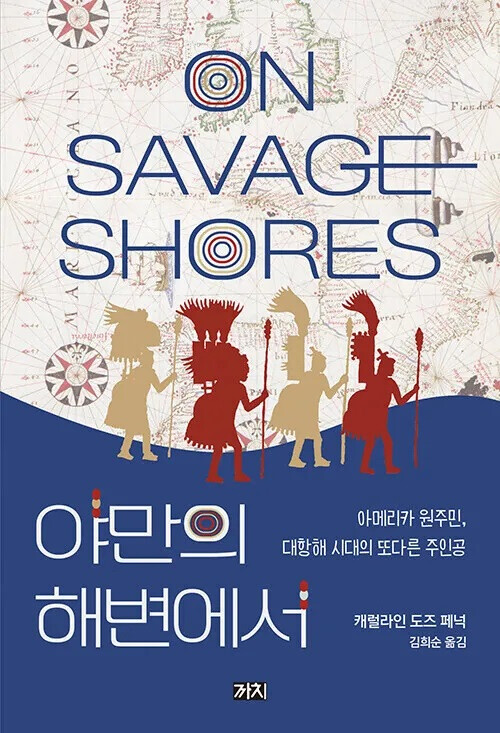
Caroline Dodds Pennock's "On Savage Shores: How Indigenous Americans Met Europe" (translated into Korean as "야만의 해변에서" by Kim Hee-soon, published by Kachi, ₩23,000) offers a crucial and nuanced perspective on the history of the Americas following Christopher Columbus's arrival in 1492. While the narrative of European conquest, exploitation, and the tragic consequences for Indigenous populations is widely known, Pennock, a distinguished historian specializing in Aztec studies, argues against a simplistic binary of conqueror and conquered, victim and perpetrator. Her work challenges the Eurocentric grand narrative by centering the experiences and perspectives of the Indigenous peoples, the original inhabitants of the American continent, thereby restoring their rightful place as active agents in this pivotal historical period.
Pennock meticulously sifts through a vast array of historical sources, including Indigenous oral traditions and records, alongside European travelogues, reports, letters, royal decrees, and account books. This comprehensive approach allows her to reconstruct the complex interactions that unfolded over centuries following the initial encounter in the 16th century, presenting a balanced and multifaceted account.
The book's central argument lies in the assertion that the "discovery" of the "New World" was not a one-sided event. Just as Europeans encountered new lands and peoples, countless Indigenous individuals also encountered Europe. In the century following Columbus's arrival, an estimated one to two million Native Americans were enslaved by Europeans, with the majority being transported across the Atlantic. However, Pennock compellingly demonstrates that these transatlantic voyages were not solely comprised of enslaved people.
Indigenous Americans journeyed to Europe in various capacities. They served as diplomats and mediators, navigating complex political landscapes and forging alliances. They worked as interpreters, bridging linguistic and cultural divides. Some became sailors, contributing their maritime knowledge. Others were integrated into European households as servants or became part of families through mixed-race relationships, including those born out of wedlock. Tragically, some were forced to perform aspects of their traditional ceremonies as forms of entertainment or exotic display for European audiences.
Crucially, Pennock emphasizes that these Indigenous travelers were not passive objects of European curiosity or exploitation. They were individuals striving to maintain their dignity and assert their rights in unfamiliar and often hostile environments. Through their eyes, Europe itself was a "savage shore" – a land marked by stark contrasts of wealth and poverty, rulers and beggars, refined etiquette and extreme violence. This inversion of the traditional "savage" label challenges the inherent biases within European historical accounts and forces a re-evaluation of the encounter between the two worlds.
Drawing upon recent scholarship and a deeper engagement with Indigenous perspectives, Pennock’s work expands upon existing narratives by highlighting the resilience, adaptability, and agency of Native Americans in the face of European expansion. It delves into the intricate social, political, and cultural dynamics that shaped these interactions, moving beyond simplistic narratives of victimhood to portray Indigenous peoples as active participants who shaped the course of history.
For instance, the book likely explores instances of Indigenous diplomacy, where native leaders skillfully negotiated with European powers to protect their lands and people. It may also shed light on the cultural exchanges that occurred, demonstrating how Indigenous knowledge and practices influenced European society, albeit often unacknowledged. Furthermore, Pennock's research likely uncovers the diverse experiences of Indigenous individuals in Europe, ranging from those who found a degree of acceptance to those who faced constant prejudice and discrimination.
By meticulously weaving together diverse sources, "On Savage Shores" paints a more complete and accurate picture of the early colonial period in the Americas. It underscores the profound impact of European arrival on Indigenous societies while simultaneously revealing the ways in which Indigenous peoples actively engaged with and responded to the challenges and opportunities presented by this unprecedented encounter. Pennock's work serves as a vital corrective to traditional historical accounts, ensuring that the voices and experiences of Indigenous Americans are finally heard and recognized as integral to the history of the Atlantic world. This book is not just a historical account; it is an act of historical reclamation, offering a more just and comprehensive understanding of a pivotal era that continues to shape the world today.
[Copyright (c) Global Economic Times. All Rights Reserved.]






























